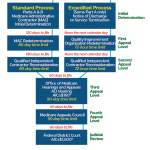Given the weakened economy, today’s rheumatology practice must be proactive, understand the market in which it operates, and plan for the future. Conducting a competitive market analysis is a critical first step toward the financial success of any medical practice.
Below are some pearls to consider when planning for and executing the market analysis that will guide a practice’s business plan.
Commit to an Investment of Time
Given the importance of understanding your market, a competitive market analysis should not be done between patients or on the fly. It takes preparation, time, and thought. The first step to completing a market analysis is making the commitment to doing it the correct way and seeing the project through. For any medical practice, this investment in time could mean the difference between moving forward with successful plans and moving forward blindly.
Use the Correct Tools, Complete the Correct Tasks
Practices often use the PEST (political, economic, social, and technological) or SWOT (strengths, weaknesses, opportunities, and threats) analyses to understand their market base. The PEST analysis provides a framework of macro-level factors of importance (e.g., Medicare cuts) that may influence key strategies; the SWOT analysis helps identify and prioritize internal and external factors that bear directly on the organization and its objectives.
To conduct these types of analyses, the following steps are recommended:
- Physicians and key managers should be involved in the completion of PEST or SWOT analyses.
- Have key employees in different offices/departments complete a SWOT analysis from their perspectives. Both the analyses of the physicians and managers as well as the analysis of key employees should be combined into one document for comparison.
- Pull referrals for the last two to three years. Look at trends by referring physicians/mid-level providers, by group, by type of referral (e.g., by service type, by provider), and by each location.
- Review the payer mix for the past three years, paying special attention to any shifts for any payer. These shifts may be tied to major employer changes in insurance coverage and may guide you to new market opportunities.
- Estimate your “value” to each major payer, (i.e., what percent of a payer’s business within your specialty is done by your group). This step helps identify potential negotiating leverage as well as risks.
- Compare your practice to your competitors. A focused SWOT analysis works well here. Are your competitors growing/aging/ aligning in ways that help or hurt your practice? Should you consider pre-emptive relationships with hospitals/health systems/other groups?
Use the Data
Once you have collected this valuable information, share it with key stakeholders. Schedule a half-day retreat for your team to evaluate the findings, and set a strategic course for the future of your practice.
Action and inaction both carry risks. Chart your course using hard data. Knowing your practice’s strengths, weaknesses, and competition—and acting on this knowledge—is a great way to improve your market position and ultimately the financial success of your practice.
For additional information or assistance with marketing and practice management, call the Practice Management department at the ACR at (404) 633-3777, or visit www.rheumatology.org, and look for Practice Support.


